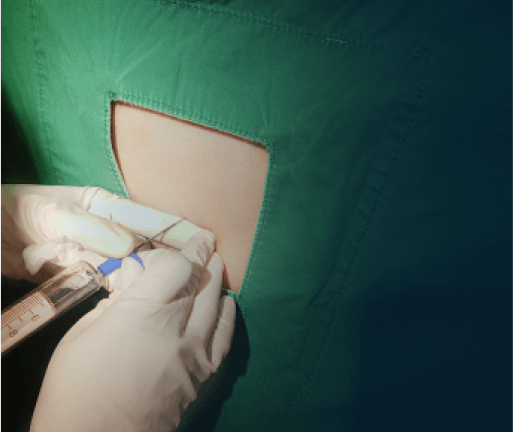Painless delivery, also known as pain-free delivery or pain relief during labor, refers to the use of various medical interventions to help reduce or eliminate the pain and discomfort associated with childbirth. These interventions can range from regional anesthesia (epidurals) to non-pharmacological techniques such as breathing exercises, relaxation techniques, and massage. Painless delivery is becoming increasingly popular as it can help to reduce the risk of postpartum depression and other mental health issues. The goal of painless delivery is to make giving birth less traumatic and more comfortable for the mother while also ensuring the safety and well-being of both mother and baby.
There are various methods used to achieve a painless delivery. These include the use of medications such as epidural anesthesia. This is the most commonly used method of pain relief during labor. An epidural involves the injection of local anesthetics and opioids into the epidural space. This space is located in the lower part of the back, to numb the lower body and reduce the sensation of pain.
Other methods used for a painless delivery include spinal anesthesia, which is similar to an epidural but is injected directly into the spinal fluid; nitrous oxide gas, also known as laughing gas, which can help to reduce anxiety and pain during labor; and intravenous medications such as opioids and sedatives.
It is imperative to note that a painless delivery does not guarantee a completely pain-free childbirth experience, and there are potential risks and side effects associated with the use of pain-relief medications. Therefore, it is crucial for expectant mothers to discuss their options for pain relief with their healthcare provider. This will allow them to make informed decisions based on their needs and preferences
FAQs
At Aster Hospitals we provide the highest quality of care and a transformative experience for all your healthcare needs. With our network of multi-speciality hospitals, specialised doctors, and world-class technology, we bring global standards of medical care to our patients.
Is painless delivery safe for the baby and mother?
Painless delivery is generally considered safe for both the mother and the baby when administered by a qualified healthcare professional. As with any medical procedure, there are some risks and possible side effects that need to be discussed with a healthcare provider prior to getting started. Painless delivery reduces the risk of physical injuries associated with labor, such as tears in the perineum and hemorrhage, and it helps to reduce the intensity of pain, allowing the mother to remain more relaxed and comfortable during labor. Additionally, it can also help reduce the risk of postpartum depression, since the mother is not dealing with the pain of childbirth.
Can painless delivery be achieved without medication?
Painless delivery can be achieved without medication by using techniques such as relaxation, breathing exercises, and massage. These techniques serve to reduce stress and tension in the body, which is beneficial to ease the pain associated with childbirth. Focusing on relaxation and breathing helps the mother control muscle contractions and minimize discomfort during labor. Massage can also be used to help reduce pain by stimulating the release of endorphins, the body's natural painkillers. Some women who experience severe labor and delivery pain may benefit from medication.
Can I choose to have a painless delivery at any stage of my pregnancy?
The timing of a painless delivery depends on various factors, including the stage of pregnancy and the individual's health history. During the early stages of labor, the cervix must thin and open to allow the baby to pass through the birth canal. This process can be sped up or slowed down depending on the health of the mother and the baby. Pre-eclampsia or any other medical complications can be treated with labor induction to ensure a safe delivery. Discuss the timing of a painless delivery with your healthcare provider.
How long does painless delivery last?
The duration of painless delivery can vary depending on the individual's labor and delivery experience. It is possible to administer painless delivery medication throughout the labor and delivery process as needed. Painless delivery medications, such as an epidural, can help to reduce the pain and discomfort associated with labor and delivery. An epidural can also help reduce the duration of delivery as it allows the mother to relax and the labor progresses more quickly.
What are the risks of epidural anesthesia?
There are potential risks and side effects associated with epidural anesthesia. Some of these include:
1. Decreased blood pressure: Epidural anesthesia can cause a drop in blood pressure, which can lead to dizziness, nausea, and lightheadedness. In some cases, it can also affect blood flow to the baby.
2. Headache: A small percentage of people who receive epidurals may experience a headache caused by a leak of cerebrospinal fluid. This usually resolves on its own, but in rare cases, a blood patch may be necessary to seal the leak.
3. Nerve damage: While rare, epidural anesthesia can cause nerve damage, which can result in numbness, weakness, or tingling in the legs or other areas of the body.
4. Infection: As with any invasive procedure, there is a risk of infection at the site of epidural needle insertion.
5. Allergic reactions: Some people may be allergic to the medications used in epidural anesthesia, which can cause itching, rash, or difficulty breathing.
6. Prolonged labor: Epidural anesthesia can sometimes slow down labor, which can lead to the need for additional interventions, such as Pitocin to speed up contractions or a vacuum or forceps delivery.
Does painless delivery increase the risk of a C-section?
There is some evidence to suggest that painless delivery may increase the risk of a C-section, but the overall risk is relatively low. It is critical to discuss the risks and benefits of painless delivery with a healthcare provider. Painless delivery may lead to longer labor, which can increase the risk of a C-section. Additionally, painless delivery may interfere with the body's natural hormonal responses to labor, which can cause labor to stall or become more difficult. It is pertinent to discuss the risks and benefits of painless delivery to ensure that the mother is making an informed decision.
Are there any side effects of painless delivery medication?
The use of painless delivery medication can have side effects, including a drop in blood pressure, headache, nausea, and itching. These side effects can be managed with various medications like antihistamines, anti-nausea medications, and pain relievers. Medical providers may also recommend lifestyle modifications like increasing liquids or a change in diet.
Will I still feel pressure during the delivery process with painless delivery?
It is true that a painless delivery can reduce or eliminate pain during labor and delivery, but some women may still feel pressure or discomfort during the process. Painless delivery is achieved through the administration of labor and delivery medications, such as epidurals, that provide relief from the pain of contractions and delivery. However, these medications do not entirely eliminate all sensations of pressure or discomfort during labor and delivery.
Will I be able to breastfeed my baby after having a painless delivery?
Painless delivery should not impact a woman's ability to breastfeed her baby. Painless delivery can help reduce the amount of stress the mother may feel during the labor process. This can aid with the release of oxytocin, a hormone that is needed for milk production. Additionally, it can also help to reduce the amount of trauma the baby may experience during delivery, which can help the baby latch onto the mother's breast more easily. To ensure that the mother and baby are healthy and comfortable, it is wise to speak with a healthcare provider if you have any concerns.
Can epidural anesthesia have side effects on my baby?
It is important to note that these side effects are relatively rare and usually not serious. It is thought that the medications used in epidurals may cross the placenta and affect the baby's nervous system. This disruption in the baby's nervous system can lead to changes in behavior. If you're concerned about the potential risks of epidural anesthesia for your baby, you should talk to your healthcare provider. They can help you weigh the potential benefits and risks which will help you make an informed decision about your labor and delivery.



